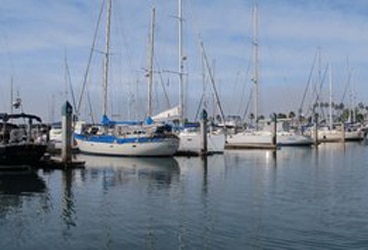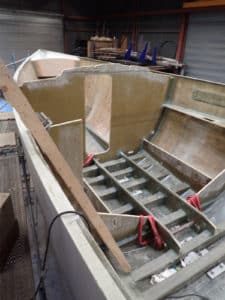
At first, Thomas R. Spencer didn’t think much about it when he saw tax agents come into the Coral Marina more than three months ago, checking boat by boat.
“I had one gentleman come by the boat and ask to see some papers. I said, ‘What do you want to see?’ He said, ‘Where’s the serial number of the boat?’ I said I didn’t know, just look around,” Spencer recalled.
Little did Spencer know that he would be snared in an operation that has led to the broadest and most complicated seizure of foreign-owned sailboats and yachts in Mexico’s history, punching a hole in the hull of the nautical tourism industry and even frightening property owners. Marina owners now bail furiously to stay alive.
The impounding of 337 mostly foreign-owned sailboats and yachts at 11 marinas around Mexico on Nov. 26 has affected not only hundreds of American and Canadian boat owners but also marinas, crews, dry docks and, more broadly, Mexico’s reputation as a safe and reliable destination for boat lovers.
Nearly half the vessels have subsequently been freed. But at least 190 remain impounded, tied up in red tape and confusion in raids that initially seemed aimed at rooting out tax cheats and boat thieves.
Like many retired American sailors cruising Mexican waters, Spencer had difficulty communicating in Spanish with the federal tax agent the morning he came asking questions. But some things needed no explanation. Mexican marines posted at each wharf “had their big rifles out,” and tax agents seemed to mean business.
Spencer started to worry. He contacted the person who surveyed his cutter rig when he bought it back in 1999, asking where he could find the Hull Identification Number, equivalent to a VIN on an automobile.
“He said it’s probably on the starboard side of the hull,” Spencer recalled.
It was too late. Spencer’s 48-foot boat, Symphony, like 336 other mostly foreign-owned sailboats and yachts, was legally impounded, unable to leave harbor.
“There were four dinghies that they also impounded,” said Arnulfo Espinoza Rodriguez, the dock master at the Coral Marina. They were the exception. Most of the seized boats were large vessels, a few worth millions of dollars, but “the vast majority are in the hundreds of thousands of dollars.”
Many boat owners were not at the marina that day. Since the marina is on the Pacific coast of the Baja Peninsula, only 70 miles south of the U.S. border, owners often leave vessels docked here while living elsewhere.
“If you weren’t on a boat, there was an excellent chance you’d be impounded,” said Richard Spindler, publisher of Latitude 38, a monthly magazine for sailors published in Mill Valley, Calif.
The problem, Spindler said, is that agents had little knowledge of sailboats, unaware that those built before 1972 were not required to have hull identification numbers. Even after that date, vessels built in Europe or Asia often don’t have such a number.








